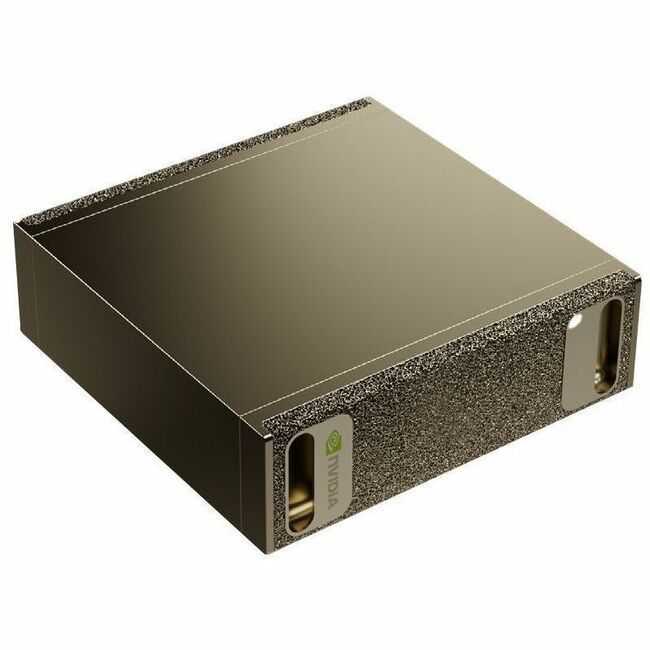SpaceX Embraces AI: NVIDIA DGX Spark Supercomputer Arrives
SpaceX integrates the NVIDIA DGX Spark AI supercomputer, marking a leap in AI hardware for space exploration and technology development.

SpaceX Welcomes the NVIDIA DGX Spark AI Supercomputer
Elon Musk’s SpaceX has recently integrated the newly launched NVIDIA DGX Spark, a compact AI supercomputer capable of petaflop-level performance. This acquisition marks a significant advancement in embedding cutting-edge AI hardware into private space exploration and technology development efforts. The DGX Spark, shipped directly from NVIDIA, is designed to accelerate AI model development locally with unprecedented efficiency and power, aligning perfectly with SpaceX’s dynamic innovation workflows.
What is the NVIDIA DGX Spark?
The NVIDIA DGX Spark is a miniaturized AI supercomputer that combines NVIDIA’s Grace Blackwell GB10 Superchip, a 20-core Arm-based processor with a Blackwell-class GPU, into a desk-sized workstation. It delivers approximately 1 petaflop (PFLOP) of sparse FP4 tensor AI performance, positioning it between the capabilities of NVIDIA’s RTX 5070 and 5070 Ti GPUs but highly optimized for AI workloads rather than graphics rendering.
Key Technical Features
- NVIDIA Grace Blackwell GB10 Superchip: Integrates 10 high-performance Cortex-X925 cores and 10 efficiency Cortex-A725 cores, totaling 20 CPU cores.
- 128 GB of Unified LPDDR5X Memory: Shared coherently between CPU and GPU, allowing large AI models to run without costly data transfers between system RAM and GPU VRAM.
- 4 Terabytes NVMe Storage: Ample onboard storage for datasets, models, and checkpoints.
- Connectivity: Includes dual 100 Gb/s QSFP Ethernet ports (200 Gb/s aggregate), Wi-Fi 7, HDMI, and four USB-C ports enabling easy integration and clustering.
- Power Efficiency: Consumes about 240 watts, allowing operation on standard AC power without specialized data center cooling or infrastructure.
- Software Stack: Comes preloaded with NVIDIA’s AI software ecosystem including CUDA, cuDNN, TensorRT, TensorRT-LLM, Triton Inference Server, and supports containerized PyTorch and JAX environments.
Significance for SpaceX and AI Development
SpaceX’s acquisition of the DGX Spark signals a strategic push to embed powerful localized AI computing into their operations. This compact supercomputer is particularly suited for:
- Running and fine-tuning large AI models locally, with capabilities supporting models up to 200 billion parameters for inference and 70 billion for fine-tuning.
- Real-time AI applications, such as computer vision and autonomous systems, which are critical for SpaceX’s spacecraft navigation, robotics, and satellite operations.
- Enhanced AI development workflows without reliance on distant cloud resources, increasing responsiveness and data security for sensitive projects.
Roboflow’s early evaluation of the DGX Spark demonstrated its potential in developing real-time vision AI applications, such as vehicle counting based on live camera feeds, highlighting the system’s strength in handling complex AI pipelines efficiently.
How the DGX Spark Stands Out in the AI Hardware Landscape
The DGX Spark is notable for its unified memory architecture, a breakthrough that eliminates the bottleneck of separate CPU and GPU memory pools. This enables seamless data sharing and accelerates AI model training and inference. Unlike traditional discrete GPU systems, the DGX Spark’s shared 128GB LPDDR5X memory, although limited to 273 GB/s bandwidth, allows handling of exceptionally large models that typical desktops cannot manage.
Additionally, two DGX Sparks can be linked via high-speed networking to create a small cluster capable of running models with up to 405 billion parameters, a scale previously achievable only in large data centers.
Market Impact and Pricing
Priced at $3,999, the DGX Spark brings supercomputing capabilities previously restricted to costly data centers into an accessible desktop form factor. This democratization is expected to accelerate AI research and deployment across industries including aerospace, automotive, healthcare, and academic research.
The system is now shipping globally, with NVIDIA ramping up availability to meet growing demand from enterprises and developers seeking high-performance AI computing on the desktop.
Visuals and Further Information
Images of the DGX Spark reveal a sleek, compact black chassis about the size of a small desktop PC, featuring multiple USB-C ports, Ethernet connections, and HDMI output. Inside, the integrated Grace Blackwell superchip and unified memory architecture represent a new paradigm in AI hardware design.
Elon Musk’s SpaceX joining the ranks of early DGX Spark adopters highlights the growing importance of localized, efficient AI supercomputing in pushing the frontiers of space exploration and AI innovation.
Context and Future Implications
The arrival of the NVIDIA DGX Spark at SpaceX is a telling example of the convergence between AI and aerospace industries. As space missions demand more autonomous decision-making and complex data analysis, having powerful AI hardware directly on-site enables rapid prototyping, testing, and deployment of AI-driven systems.
Furthermore, the DGX Spark’s efficiency and compact form factor may inspire broader adoption beyond niche supercomputing centers, transforming how organizations deploy AI infrastructure.
NVIDIA’s continued innovation with Grace Blackwell processors and Blackwell GPUs suggests future iterations will push performance further, potentially integrating into larger clusters and multi-node AI systems to handle the ever-growing scale of AI models.
In summary, the NVIDIA DGX Spark petaflop AI supercomputer has landed at SpaceX, signaling a new era of accessible, high-performance AI computing tailored for cutting-edge applications in space technology and beyond. Its unique architecture, powerful AI capabilities, and compact design make it a noteworthy addition to the AI hardware ecosystem in 2025.



